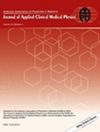A multi-stage 3D convolutional neural network algorithm for CT-based lung segment parcellation
Abstract
Background
Current approaches to lung parcellation utilize established fissures between lobes to provide estimates of lobar volume. However, deep learning segment parcellation provides the ability to better assess regional heterogeneity in ventilation and perfusion.
Purpose
We aimed to validate and demonstrate the clinical applicability of CT-based lung segment parcellation using deep learning on a clinical cohort with mixed airways disease.
Methods
Using a 3D convolutional neural network, airway centerlines were determined using an image-to-image network. Tertiary bronchi were identified on top of the airway centerline, and the pulmonary segments were parcellated based on the spatial relationship with tertiary and subsequent bronchi. The data obtained by following this workflow was used to train a neural network to enable end-to-end lung segment parcellation directly from 123 chest CT images. The performance of the parcellation network was then evaluated quantitatively using expert-defined reference masks on 20 distinct CTs from the training set, where the Dice score and inclusion rate (i.e., percentage of the detected bronchi covered by the correct segment) between the manual segmentation and automatic parcellation results were calculated for each lung segment. Lastly, a qualitative evaluation of external validation was performed on 20 CTs prospectively collected by having two radiologists review the parcellation accuracy in healthy individuals (n = 10) and in patients with chronic obstructive pulmonary disease (COPD) (n = 10).
Results
Means and standard deviation of Dice score and inclusion rate between automatic and manual segmentation of twenty patient CTs were 86.81 (SD = 24.54) and 0.75 (SD = 0.19), respectively, across all lung segments. The mean age of the qualitative dataset was 54.4 years (SD = 16.4 years), with 45% (n = 9) women. There was 99.2% intra-reader agreement on average with the produced segments. Individuals with COPD had greater mismatch compared to healthy controls.
Conclusions
A deep-learning algorithm can create parcellation masks from chest CT scans, and the quantitative and qualitative evaluations yielded encouraging results for the potential clinical usage of lung analysis at the pulmonary segment level among those with structural airway disease.


 求助内容:
求助内容: 应助结果提醒方式:
应助结果提醒方式:


